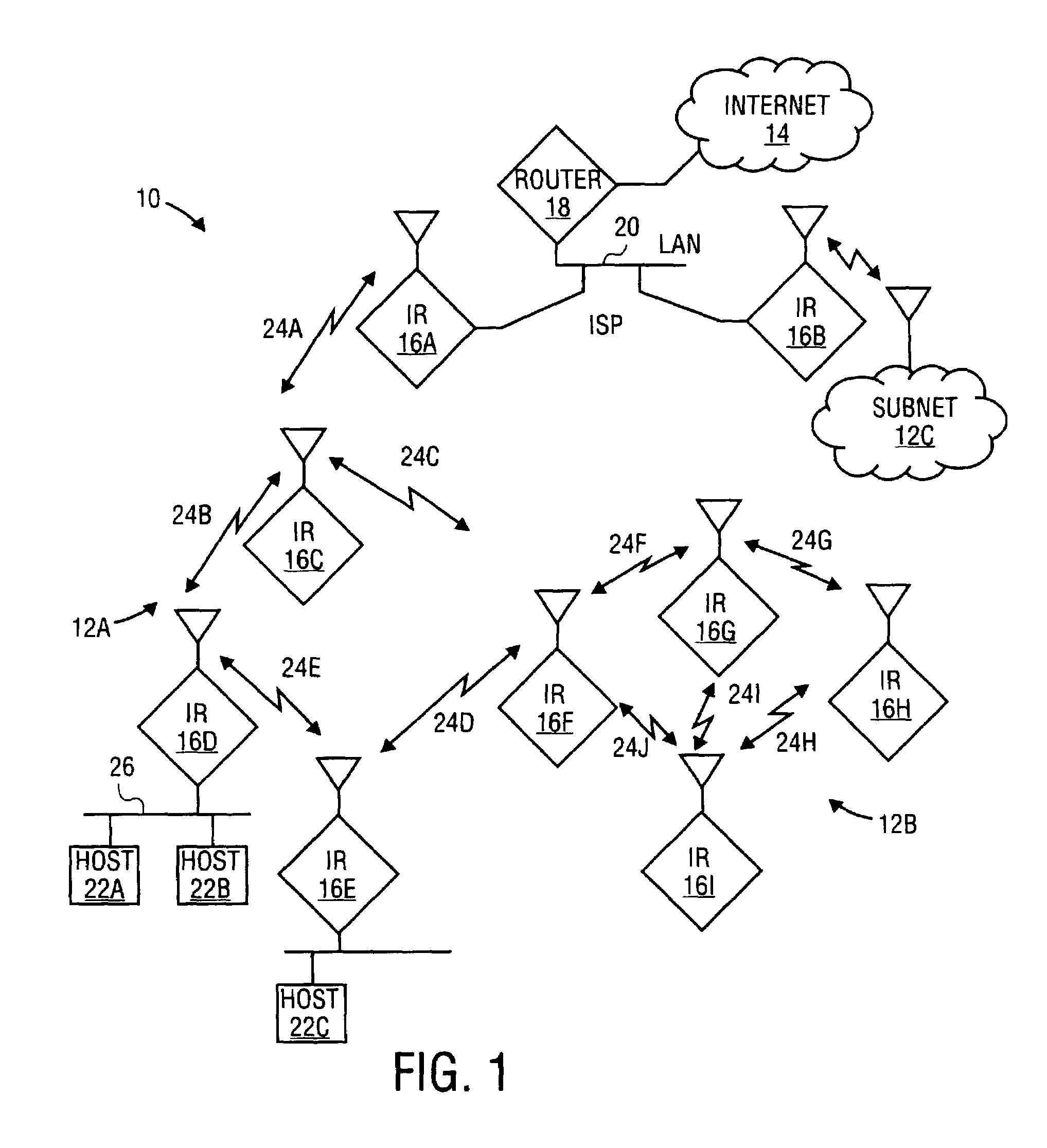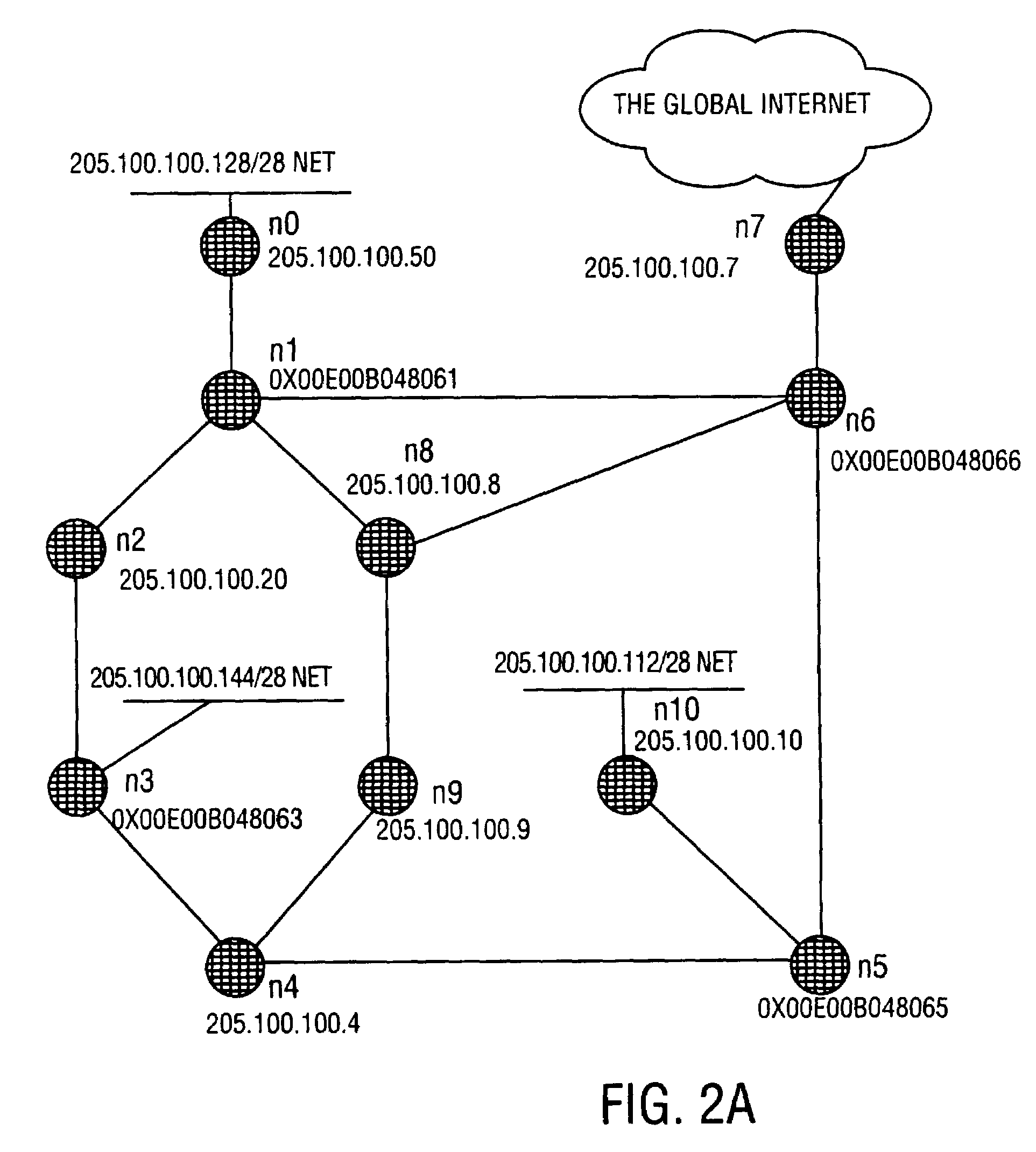Unified routing scheme for ad-hoc internetworking
a routing scheme and internetworking technology, applied in the field of routing protocols for computer networks, can solve the problems of not allowing non-technical users to install and operate such networks (or any multi-hop packet-radio networks) as seamless extensions of the internet, data packets are sent over paths longer than the shortest paths, and available bandwidth is underutilized
- Summary
- Abstract
- Description
- Claims
- Application Information
AI Technical Summary
Benefits of technology
Problems solved by technology
Method used
Image
Examples
Embodiment Construction
[0038]Presented below is an Ad-hoc Internet Routing (AIR) protocol that provides a unified scheme for ad-hoc internetworking. Because supporting traffic to and from the Internet is likely to be a key requirement of ad-hoc networks, the hosts and networks attached to the packet radios with which the ad-hoc network is built (which will be referred to as Internet Radios or IRs) need Internet addresses. These Internet addresses are needed even if the IRs support routing at the sub-network level or link level within the ad-hoc network. Assigning Internet addresses to IRs also provides benefits from the standpoint of network management, because it enables the use of standard and emerging network management products based on the simple network management protocol (SNMP).
[0039]AIR enables ad-hoc internets by supporting routing at the IP layer rather than below it. Thus, AIR advances the state of the art in routing in ad-hoc networks in a number of ways. For example, AIR uses both medium-acc...
PUM
 Login to View More
Login to View More Abstract
Description
Claims
Application Information
 Login to View More
Login to View More - R&D
- Intellectual Property
- Life Sciences
- Materials
- Tech Scout
- Unparalleled Data Quality
- Higher Quality Content
- 60% Fewer Hallucinations
Browse by: Latest US Patents, China's latest patents, Technical Efficacy Thesaurus, Application Domain, Technology Topic, Popular Technical Reports.
© 2025 PatSnap. All rights reserved.Legal|Privacy policy|Modern Slavery Act Transparency Statement|Sitemap|About US| Contact US: help@patsnap.com



